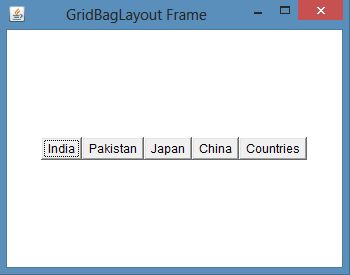
HTML row1 new HTML(row 1) HTML row2 new HTML(row 2) HTML row3. When no more components fit on a line, the next one appears on the next line. Components are laid out from the upperleft corner, left to right and top to bottom. FlowLayout implements a simple layout style, which is similar to how words flow in a text editor.

There are quite a few additional combinations that are possible with these API's. It is the default layout of the applet or panel. You can align to the center and the middle horizontally The Java FlowLayout class is used to arrange the components in a line, one after another (in a flow). the following alignments are supported thru the usage of setAlign & That is why this layout should only be used for relativelyįlow layout supports aligning the component horizontally and vertically, it defaults to the top left alignment for This confuses the line breaking logic and fails in odd ways. As a result when an element of varying size is placed in a flow layout It can't accurately handle complex layouts. This class works nicely for simple elements, however since Codename One doesn't reflow recursively (for performance)
#FLOWLAYOUT JAVA NEW LINE CODE#
Reduce the code required to create the same UI e.g.:Ĭontainer flowLayout = FlowLayout.encloseIn(new Label("First"), Since flow layout isn't a constraint based layout it has a bunch of very useful enclose methods that can significantly

When it reaches the edge of the container it will breakįorm hi = new Form("Flow Layout", new FlowLayout())

In a row one after another based on their preferred size. FlowLayout is the default layout manager for Codename One Containers and Forms.



 0 kommentar(er)
0 kommentar(er)
